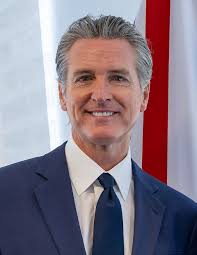
Introduction
As California’s governor since January 2019, Gavin Newsom has played a pivotal role in navigating the state through various challenges, including the COVID-19 pandemic, climate change, and housing crises. His leadership has not only influenced state policies but also set trends that resonate across the United States. Understanding the impact of Newsom’s governance is crucial for grasping the current political landscape of California and its implications for the future.
Political Actions and Policies
Gavin Newsom’s tenure has been marked by a series of significant policies aimed at creating a more equitable society. In the face of the COVID-19 pandemic, he was instrumental in implementing statewide lockdowns, mask mandates, and vaccinations. California emerged as a national leader in vaccination rates, with the governor advocating for public health measures that prioritized safety over political popularity.
One of Newsom’s notable initiatives has been the expansion of healthcare access. He championed the “California Blueprint,” which includes efforts to provide healthcare to undocumented immigrants, illustrating his commitment to a more inclusive approach to social welfare. Furthermore, Newsom has pushed for aggressive climate policies, including a ban on the sale of new gasoline cars by 2035, part of his broader goal for carbon neutrality.
Challenges Faced
However, Newsom’s governance has not been without its challenges. In 2021, he faced a recall election fueled by discontent over his handling of the pandemic and rising issues such as homelessness and wildfires. Despite significant campaigning and backing from various organizations, he successfully fended off the recall, securing his position as governor but highlighting the divisions present among California voters.
The ongoing housing crisis remains a critical issue during his administration. Despite initiatives aimed at increasing housing supply and affordability, many Californians continue to struggle with high housing costs. The need for balancing environmental concerns with housing developments complicates his efforts to address this pressing problem.
Conclusion
Gavin Newsom’s impact as governor of California is a mix of progressive ideals and complex challenges. His leadership during the pandemic has garnered both praise and criticism, reflecting the multifaceted nature of governing such a diverse state. As he continues his term, all eyes will be on how he addresses the housing crisis and implements his ambitious climate agenda. The outcomes will have lasting ramifications not only for California but could also influence national conversations on governance and policy in the coming years.



